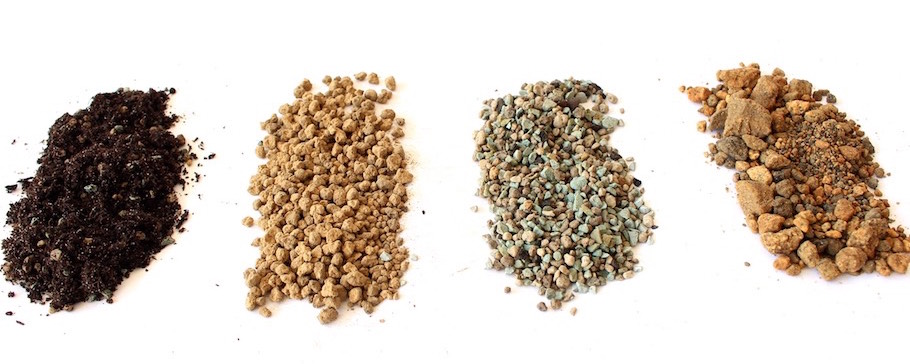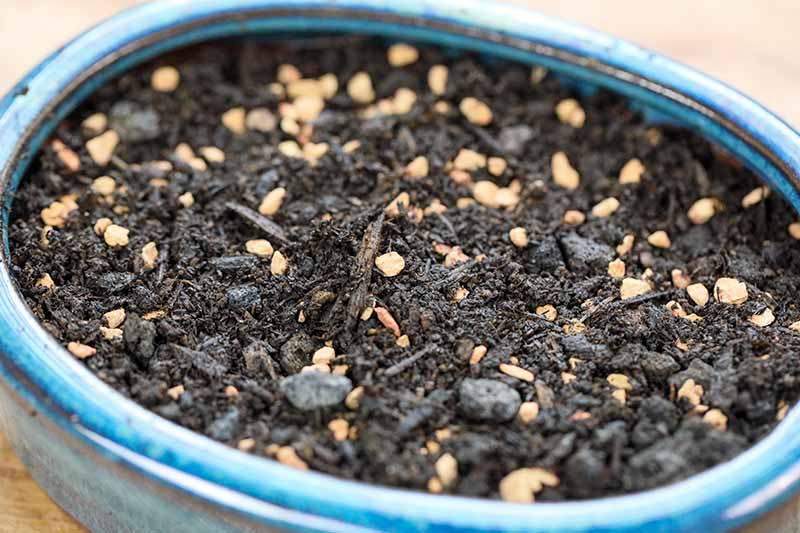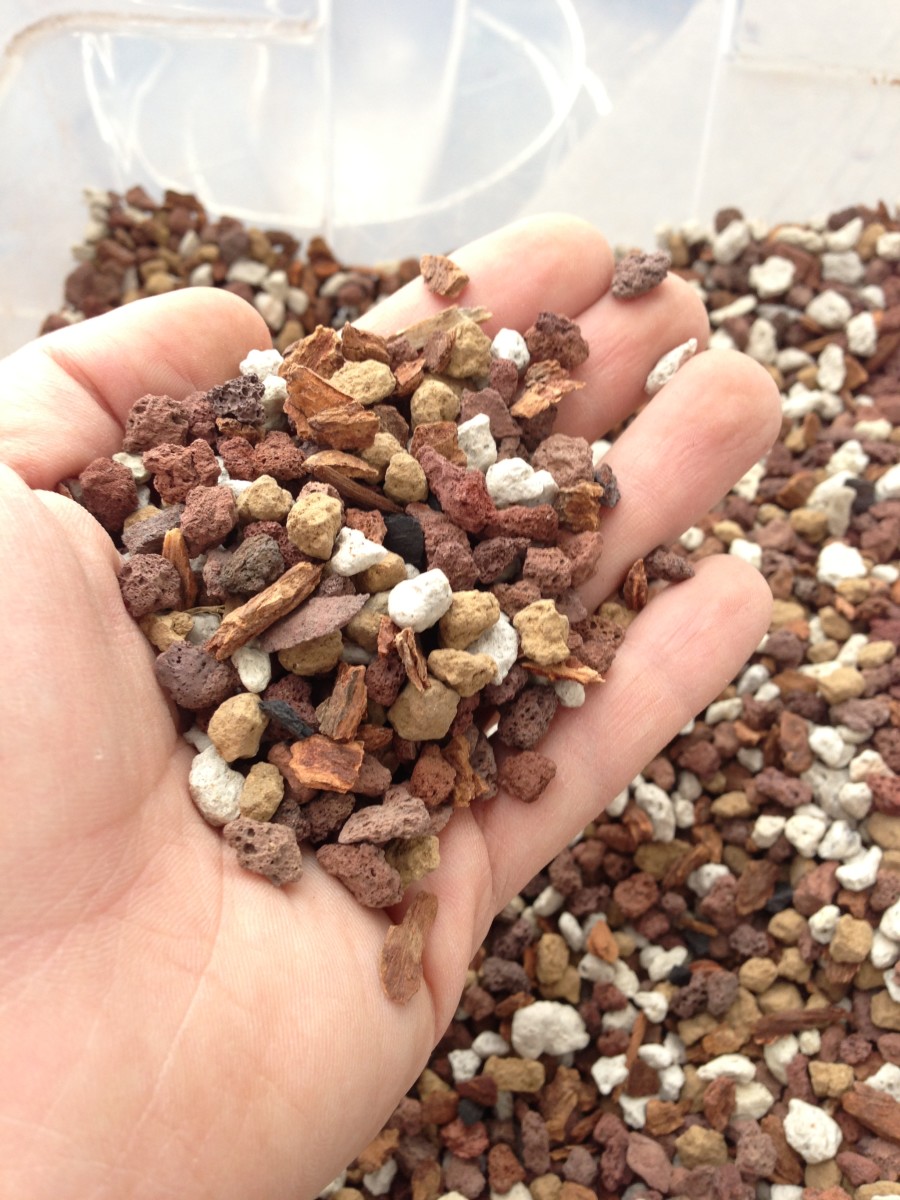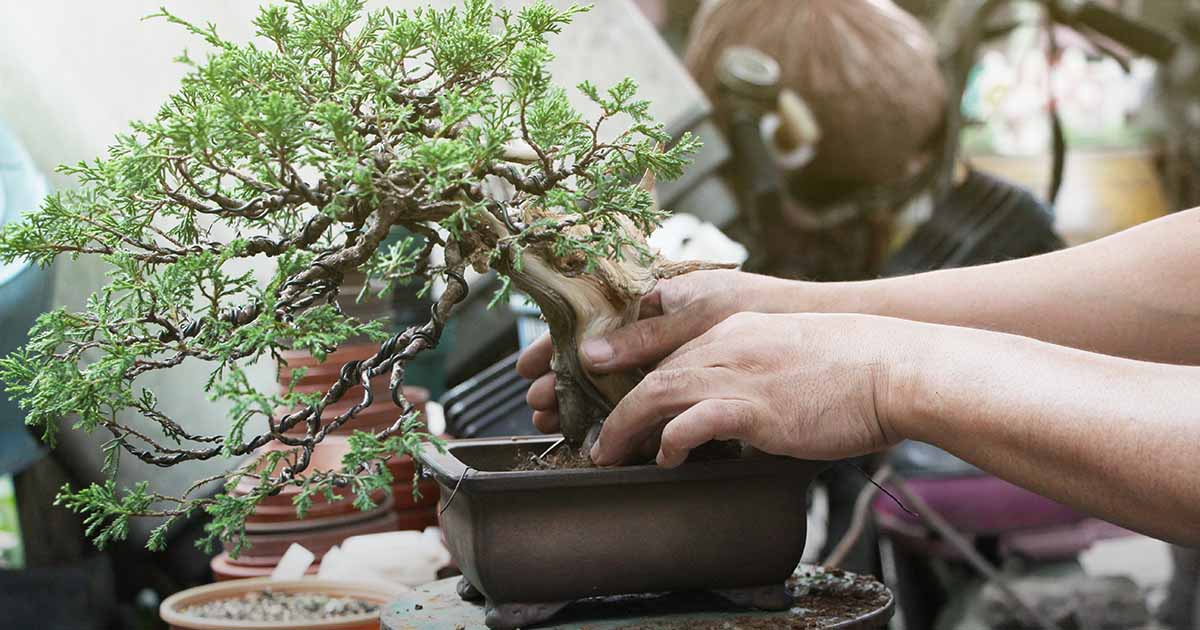The Basic Principles Of Akadama bonsai soil
If you've ever been captivated with the artwork of bonsai, you might be thinking if special soil is necessary to cultivate these miniature masterpieces. The answer is Of course! Distinctive soil is important for the wellness and vitality of bonsai trees.In the following paragraphs, we will check out the different types of soil and substrates Utilized in bonsai cultivation, which includes organic and natural and inorganic possibilities.
We will also learn suggested soil mixtures for numerous bonsai species, for instance deciduous, coniferous, and indoor varieties. From akadama and pumice to moss and river sand, we are going to dive into your interesting earth of bonsai soil and make it easier to understand why It is an important part of cultivating these exquisite trees.

Bonsai soil
What is bonsai soil?
Bonsai soil is a specialized type of soil that is specifically formulated for growing and maintaining bonsai trees. Unlike regular garden soil, bonsai soil is well-draining and provides the necessary nutrients and moisture balance for the tree's root system. The composition of bonsai soil is carefully designed to meet the unique needs of bonsai trees, ensuring their health and longevity.
The importance of bonsai soil
The choice of soil plays a crucial role in the success of your bonsai tree. The right soil provides optimal drainage, allowing excess water to flow freely and preventing root rot. It also promotes a healthy and well-developed root system, which is essential for the overall health and growth of the tree. Bonsai soil retains moisture while allowing air to reach the roots, striking the perfect balance for the tree's needs. Choosing the right bonsai soil is essential for maintaining a healthy and thriving bonsai tree.
Bonsai substrates
What are bonsai substrates?
Bonsai substrates refer to the different materials that can be used to create the ideal soil composition for bonsai trees. These substrates are carefully chosen to meet the specific needs of different species of bonsai trees and to ensure proper water drainage and nutrient availability.
Different types of bonsai substrates
There are various types of bonsai substrates available, each with its own unique characteristics and benefits. Some common bonsai substrates include:
- Organic materials: These include ingredients such as bark, peat moss, and coconut coir. Organic substrates help retain moisture and provide essential nutrients to the bonsai tree.
- Inorganic materials: These involve parts like pumice, lava rock, and akadama. Inorganic substrates provide great drainage, making sure that extra water does not accumulate around the roots in the bonsai tree.
- Soil amendments: These are definitely substances which have been included for the soil combination to improve its Houses. Examples of soil amendments include perlite, vermiculite, and sand. They Increase the soil's aeration, drinking water-Keeping capacity, and nutrient availability.
By being familiar with the differing types of bonsai substrates and their Attributes, you'll be able to decide on the most fitted a person on your bonsai tree's requirements.
Natural or Inorganic Soils
Organic soils for bonsai
Organic and natural soils for bonsai are composed of all-natural materials which include bark, peat moss, coconut coir, and compost. These resources provide a abundant source of nutrients with the bonsai tree and advertise healthy root progress. Organic soils even have great h2o retention Qualities, making sure the tree receives adequate dampness between watering periods. However, it is important to note that natural and organic soils may stop working over time and develop into compacted, leading to lousy drainage and possible root problems.
Inorganic soils for bonsai
Inorganic soils for bonsai consist of resources like pumice, lava rock, akadama, and soil amendments like perlite or vermiculite. These components have superb drainage properties, avoiding waterlogged soil and selling aeration round the roots. Inorganic soils are favored by several bonsai fanatics due to their longevity and talent to deliver a secure surroundings for your bonsai tree's root method. However, they may demand far more frequent watering and additional fertilization, as they don't hold just as much dampness or nutrients as organic and natural soils.
Advantages and drawbacks of working with organic and inorganic soils for bonsai
Deciding on concerning organic and inorganic soils for your personal bonsai tree will depend on numerous components, including the particular species of tree, your weather, and personal Tastes. Here's the advantages and drawbacks of every:
Organic soils:
- Execs: Supply nutrients, superior h2o retention, endorse wholesome root enhancement.
- Disadvantages: May possibly stop working after some time, prospective for weak drainage Otherwise adequately managed.
Inorganic soils:
- Pros: Superb drainage, extended-lasting, secure ecosystem for roots.
- Cons: Less water retention, could have to have extra Regular watering and fertilization.
By contemplating the advantages and disadvantages of each natural and inorganic soils, you may make an knowledgeable final decision determined by the specific requires of the bonsai tree.
Soil parts
Critical factors of bonsai soil
Bonsai soil is often composed of three principal components: grit, organic make a difference, and clay. These elements function collectively to create the ideal soil structure to the bonsai tree's root technique.
- Grit: Grit, for example sand or perlite, presents drainage and aeration while in the soil. It can help avoid waterlogging and makes it possible for air to reach the roots.
- Natural make any difference: Organic and natural issue, such as compost or bark, gives nutrients to your bonsai tree. In addition it allows retain dampness and improve the soil's Total framework.
- Clay: Clay particles give some drinking water retention characteristics and support bind the soil together. Having said that, a lot of clay can cause lousy drainage and compaction.
Job of each and every soil element
Each individual soil ingredient performs an important part in making a well-well balanced and nutritious environment to the bonsai tree's roots.
- Grit: Grit delivers the mandatory drainage and aeration in the soil. It prevents the roots from sitting down in stagnant drinking water, decreasing the risk of root rot and promoting Total root well being.
- Natural and organic subject: Natural and organic subject presents vital nutrients into the bonsai tree. It aids in dampness retention and contributes to the general composition of the soil.
- Clay: Clay particles assistance bind the soil together and provide some h2o retention ability. Nonetheless, it is important to balance the level of clay to avoid problems like weak drainage and compaction.
By knowledge the roles of each soil element, you'll be able to create a well balanced bonsai soil blend that satisfies the particular wants of your tree.

Recommended Bonsai soil mixtures
Common bonsai soil mixtures
There are several common bonsai soil mixtures that have been proven effective for various types of bonsai trees. These mixtures typically consist of a combination of inorganic substrates, organic matter, and soil amendments.
Some of the commonly used bonsai soil mixtures include:
- Akadama, pumice, and lava rock: This mixture is popular among bonsai enthusiasts for its excellent drainage and water retention properties.
- Akadama, lava rock, and natural and organic matter: This combination brings together the advantages of inorganic substrates with the nutrient-abundant Qualities of natural and organic make a difference.
- Pumice, perlite, and bark: This combination gives fantastic drainage and aeration even though retaining some dampness and furnishing nutrients.
These are generally just a few examples of bonsai soil mixtures, and The best mixture will count on the specific requirements within your bonsai tree as well as your local climate.
Elements to look at when picking a bonsai soil combination
When picking out a bonsai soil combination, it's important to take into account the following variables:
- Species of bonsai tree: Distinctive species have diverse humidity and nutrient prerequisites. Analysis the precise requirements of your respective tree to select a soil mixture that fulfills its demands.
- Weather: The local weather you reside in can affect the dampness retention Attributes from the soil. Take into account the typical humidity and temperature in your town When picking a soil mixture.
- Watering behavior: Your individual watering habits and schedule ought to align with the soil mixture you choose. Some mixtures require additional Repeated watering, while some keep humidity for lengthier intervals.
- Spending plan: Some soil elements might be costlier than Other people. Look at your funds when picking a soil mixture.
By getting these variables into account, you are able to choose a bonsai soil combination that provides the best rising conditions on your tree.
Deciduous Bonsai soil
Greatest soil composition for deciduous bonsai
Deciduous bonsai trees, for instance maple or birch, have specific soil necessities to help their expansion and well being. The ideal soil composition for deciduous bonsai ordinarily features a mix of organic and natural make a difference, inorganic substrates, and soil amendments.
A advised soil composition for deciduous bonsai may possibly incorporate:
- Akadama: Supplies excellent h2o retention though allowing for for drainage. It also releases nutrients slowly and gradually as time passes.
- Pumice: Encourages aeration and drainage while in the soil, blocking waterlogging.
- Bark or peat moss: Provides organic and natural matter for the soil, delivering nutrients and humidity retention.
This soil composition makes sure that the roots of deciduous bonsai trees get the best stability of moisture, nutrients, and oxygen for ideal development.

Coniferous and Pine soil
Ideal soil mixture for coniferous and pine bonsai
Coniferous and pine bonsai trees have specific soil requirements due to their water retention needs and preference for acidic soil. An ideal soil mixture for coniferous and pine bonsai should provide good drainage while retaining moisture and maintaining the desired pH level.
A recommended soil mixture for coniferous and pine bonsai may include:
- Akadama: Provides excellent water retention while allowing for sufficient drainage. It releases nutrients slowly over time.
- Pumice: Promotes aeration and drainage from the soil, blocking waterlogged roots.
- Peat moss: Provides organic and natural make any difference and acidity for the soil, generating an excellent pH stage for coniferous and pine trees.
This soil mixture ensures that the roots of coniferous and pine bonsai trees receive the ideal equilibrium of humidity, nutrients, and acidity for his or her particular demands.
Akadama
What on earth is akadama?
Akadama can be a form of clay soil which is widely Employed in bonsai cultivation. It is noted for its excellent drinking water retention Homes, which make sure a steady source of dampness towards the bonsai tree's roots. Akadama is additionally prized for its capability to release nutrients little by little as time passes, providing a reliable supply of nourishment for the tree.
Benefits of working with akadama in bonsai soil
Working with akadama in bonsai soil offers various Rewards:
- Drinking water retention: Akadama has Fantastic drinking water retention Attributes, allowing for it to carry humidity without the need of turning out to be waterlogged. This ensures that the bonsai tree's roots get a continual offer of h2o, promoting wholesome expansion.
- Nutrient launch: Akadama slowly but surely releases nutrients into the soil with time, offering a dependable source of nourishment for your bonsai tree. This cuts down the necessity for Repeated fertilization and can help manage a balanced nutrient profile.
- Aeration: Despite its water retention abilities, akadama also provides adequate aeration on the bonsai tree's roots. It lets air to reach the root technique, stopping troubles such as root rot as a consequence of deficiency of oxygen.
By incorporating akadama in the bonsai soil, you could generate an best increasing atmosphere for your tree, guaranteeing its health and fitness and vitality.

Lava rock
How lava rock benefits bonsai soil
Lava rock is a popular component in bonsai soil mixtures due to its excellent drainage and aeration properties. It is typically used in conjunction with other substrates to create the ideal soil composition for bonsai trees.
The benefits of check here lava rock in bonsai soil include:
- Drainage: Lava rock provides excellent drainage, preventing waterlogging and ensuring that excess water flows freely through the soil. This helps prevent root rot and provides a healthy environment for the roots to thrive.
- Aeration: The porous character of lava rock permits air to circulate throughout the soil, offering oxygen on the bonsai tree's root program. Proper aeration is critical for balanced root progress and Over-all tree advancement.
- Longevity: Lava rock is usually a durable materials that doesn't break down very easily. This makes certain that the soil composition stays secure as time passes, minimizing the necessity for frequent soil replacements.
Lava rock is obtainable in various sizes and shapes, permitting for customization according to the precise requires of your respective bonsai tree and soil demands.
Differing kinds of lava rock
You will find different types of lava rock that can be Employed in bonsai soil mixtures, including:
- Black lava rock: Black lava rock is actually a normally made use of materials in bonsai soil mixtures. It provides exceptional drainage Houses and adds an aesthetic element to the general presentation in the bonsai tree.
- Red lava rock: Red lava rock is another well known alternative in bonsai soil mixtures. It offers comparable drainage and aeration Positive aspects as black lava rock but has a definite reddish color that adds Visible fascination towards the container.
Both of those black and red lava rocks are broadly offered and can be conveniently incorporated into your bonsai soil mixture.
Potting
Crucial tips for effective bonsai potting
Potting is actually a essential course of action in bonsai cultivation, mainly because it instantly impacts the health and improvement from the tree's roots. Here are a few crucial strategies for prosperous bonsai potting:
- Choose the proper pot dimensions: Choose a bonsai pot that permits for root progress even though however offering a comfortable in shape. Prevent pots that are as well substantial, as they can lead to excessive soil humidity and lousy root enhancement.
- Use bonsai wire: Safe the tree during the pot applying bonsai wire to guarantee security. This helps prevent the tree from shifting or turning out to be uprooted for the duration of watering or sturdy winds.
- Trim and unfold the roots: Just before potting the bonsai tree, very carefully trim and spread out the roots. This encourages outward growth and helps prevent root tangling or root-sure troubles.
- Incorporate mesh screens: Spot mesh screens in excess of the drainage holes at the bottom with the pot to prevent soil erosion and ensure suitable drainage.
- Use clean bonsai soil: When potting, generally use contemporary bonsai soil to deliver the mandatory nutrients and ideal developing circumstances with the roots.
By pursuing these vital ideas, you are able to guarantee An effective potting approach and advertise the overall health and fitness and expansion of one's bonsai tree.
The function of bonsai pots in soil humidity Regulate
Bonsai pots Perform a crucial function in soil dampness Manage, immediately impacting the well being and expansion in the tree. Bonsai pots are typically shallow and have drainage holes, permitting excess h2o to escape and blocking the soil from getting to be waterlogged.
The design of bonsai pots promotes evaporation and air circulation, which aids regulate soil dampness degrees. The shallow depth and wide opening of the pot expose additional surface area space on the soil to the air, aiding in humidity evaporation. This prevents the roots from sitting down in excessively wet soil, lessening the chance of root rot and various h2o-relevant problems.
Also, the drainage holes in bonsai pots enable any excessive water to flee, stopping waterlogged soil and promoting aeration around the roots. Appropriate aeration is essential for the wellbeing and advancement of the foundation program, making sure the bonsai tree receives the mandatory oxygen for growth.
Through the use of bonsai pots designed for powerful dampness control, you may make a favorable natural environment for the bonsai tree's roots and boost its All round overall health and vitality.
In conclusion, deciding on the appropriate bonsai soil is significant to the success and overall health of your bonsai tree. Knowing the differing types of bonsai substrates, website the function of organic and natural and inorganic soils, the key elements of bonsai soil, and the different advisable soil mixtures will help you supply the best growing situations on your bonsai tree. Whether you've got a deciduous or coniferous bonsai, incorporating resources like akadama and lava rock can greatly enhance the soil's drainage and nutrient availability. Furthermore, paying attention to potting procedures and working with bonsai pots made for moisture Command will even further support the thriving progress of your respective bonsai tree. With good comprehending and implementation of bonsai soil procedures, you may benefit from the beauty and artistry of bonsai cultivation For a long time to return.
